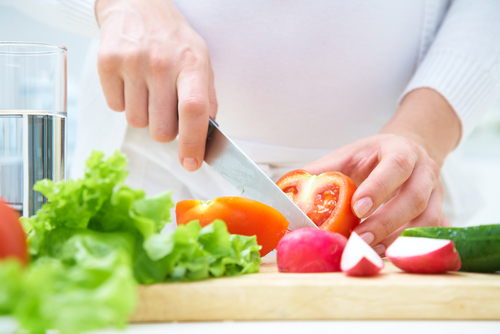Broccoli is a dark green leafy vegetable that belongs to
Brassica, a plant family that includes
kale,
cabbage,
cauliflower and brussels sprouts. This vegetable was originated in Italy, where the name ‘broccoli’ is derivedfrom the Italian word
broccolo, meaning ‘branch’ and was first cultivated in the 17th or 18th century.
Broccoli is one of the most popular vegetables all over the world
that used in a variety of dishes and cuisines. This vegetables can be
eaten raw or cooked, but the best ways are to steam or eat them raw as
salad, because that preserves the nutrients in it.
Broccoli has long been regarded as one of the super foods that packed with tremendous health benefits. The nutritional value of broccoli can be considered as the powerhouse of
iron,
protein, calcium, chromium, carbohydrates, vitamin A and vitamin C.
Broccoli also contains important phytochemicals and antioxidants,
which fight various illnesses and infections. The top three proven health benefits of broccoli are as given below:
- Anti-cancer properties
The American Cancer Society recommends eating more broccoli and other cruciferous vegetables
because they contain phytochemicals – anti-cancer properties.
Epidemiological studies suggest that a diet rich in broccoli can reduce
the risk of certain types of cancer such as breast cancer, colon cancer and lung cancer.
- Anti aging properties
Broccoli also has anti aging properties which can reverse the effect of the aging process.
- Aid digestion
Broccoli is rich in fiber, which helps with digestion and works at dealing with or even preventing constipation.
For more benefits visit: http://www.ehealthzine.com/broccoli-health-benefits.html
Tonight's dinner:

Picture by: fastapasta.com
Homemade Chicken Fettuccine and Broccoli
Ingredients:
-
8 ounces refrigerated fettuccine pasta
- 1 crown of broccoli florets
-
2 tablespoons butter
- 2-3 skinless, boneless chicken breast halves - cut into chunks
-
8 ounces mushrooms, sliced
- 1/2 of a yellow onion
- 1 teaspoon of garlic salt
- 1/8 teaspoon of ground black pepper
- 1 1/2 cups heavy cream
- 1/4 cup of grated Parmesan cheese
Directions:
- Bring a large pot of lightly salted water to a boil. Add fettuccine and broccoli florets and cook for 2 to 3 minutes; drain.
- In a large skillet,
brown chicken and mushrooms and onions in butter until chicken is cooked through.
Season with garlic salt and pepper. Add whipping cream and cook until
thick, stirring constantly. Add Parmesan cheese when at desired
consistency. Add noodles and broccoli to combine. Serves 4.
Family recipe















